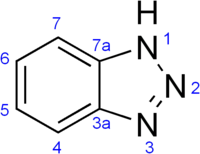
Photo from wikipedia
Recent improvements in survey methods for microplastic (MP) pollution in natural waters have enabled quantification of MP particles Click to show full abstract
Recent improvements in survey methods for microplastic (MP) pollution in natural waters have enabled quantification of MP particles < 300 μm in diameter. Historically, this putatively important size fraction of MP particles has not been sampled adequately, possibly leading to significant underestimations of plastic inventories in aquatic systems. Furthermore, reported MP particle numbers are poorly constrained proxies for MP mass loadings as sizes vary widely and densities differ within and among polymers, consequently compromising mass flux estimations. However, determination of MP number, identity, and mass can resolve these issues and enable more accurate estimations of MP loadings. Using Raman microspectroscopy coupled with three‐dimensional (3D) spectral imaging, we have developed an automatable methodology to detect, identify, and quantify MPs retained on filters from discrete water samples. Raman spectral information enabled identification of plastic polymers in particles between 0.5 and 300 μm in diameter and generation of 3D chemical maps. To accelerate volume determinations of each identified MP particle, we developed an algorithm to derive volumes from image analysis of two‐dimensional micrographs that are statistically indistinguishable from those directly measured by 3D Raman chemical maps. Masses of each Raman‐identified MP particle are determined from their volumes and known plastic specific weights. This methodology provides accurate estimations of the smallest MP particles' contributions to total MP mass in discrete water samples, providing vital information for mass flux calculations of MPs in natural waters.
Journal Title: Limnology and Oceanography: Methods
Year Published: 2021
Link to full text (if available)
Share on Social Media: Sign Up to like & get
recommendations!